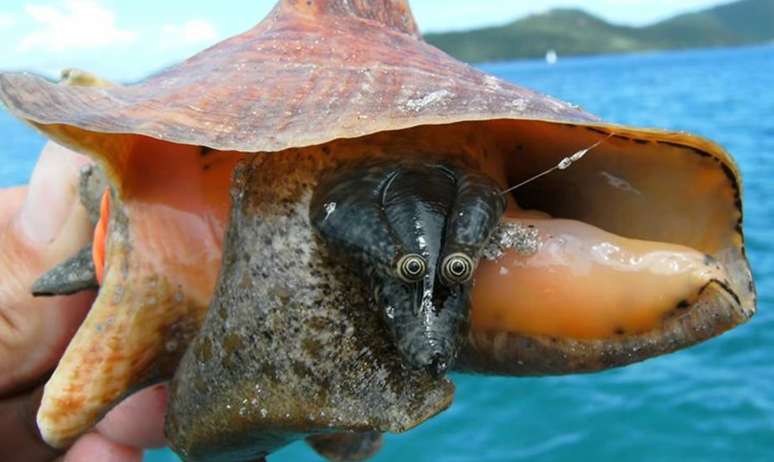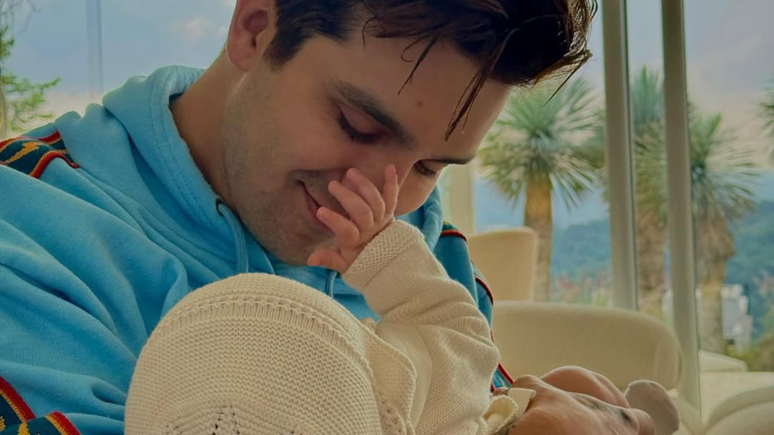The species’ population has been reduced in five years, from 700,000 to 126,000 individuals in the United States
The Florida Fish and Wildlife Conservation Commission (FWC), in the United States, is promoting “dates” to protect king conchs from the threat of extinction. Marine ‘Tinder’ was born when it was realized that the population of this marine snail dropped from 700,000 in 2017 to 126,000 in 2022, due to rising sea temperatures.
Receive the main news directly on WhatsApp! Subscribe to the Terra channel
To achieve this, researchers are removing the species from its natural coastal habitat and relocating it to deeper, colder waters, where it finds a multitude of new partners. Last year, the surface temperature of the Florida Keys reached 38.43°C, a global record.
“We’re dealing with very shallow water, very cold in the winter. In the spring and summer it’s very hot. The animals shut down. Instead of reproducing, they direct their energy to survival, and they never develop their reproductive organs much. good,” he explained. al The Guardian scientist Gabriel Delgado, of the FWC.
According to the study, the researchers believe that environmental change encourages the shells, which are largely lethargic and sterile in shallow, overly warm waters, to mix and mate in more suitable environments, with a new set of likely partners.
“Coastal conchs are destined for a life of celibacy, and we’re trying to fix that,” says Delgado, who oversaw the summer translocation of more than 200 tagged species off the coast of Marathon Island, a town in the middle of the archipelago. of the Florida Keys.
“It’s like, ‘Hey guys, you’re having a hard time knowing another shell. Well, here’s some more time to party, now you can open up a little more,'” he joked.

Among the factors that placed this sea snail on the US government’s list as a threatened species are Irma, in 2017, and Ian, in 2022, which killed several species, as well as illegal hunting. Queen conch hunting has been banned since the 1970s, but despite this the animal is a highly prized delicacy there.
The idea arose from similar, smaller-scale experiments in which coastal conchs were moved to offshore breeding aggregations and quickly managed to mate and spawn.
“Unfortunately we did not carry out further checks the following year to see whether they were indistinguishable from the native conch,” he admitted.
Help from everyone
To find the queen shells, the local community was asked to observe and notify the project. With the emails received, the volunteers managed to collect 208 of these sea snails, which were taken to a more appropriate location for ‘courtship’ in July.
A month later, in August, the team conducted the first of at least 12 monthly checks on the transferred shells, and was surprised to see that they were all still there.
“So far things are going as expected given the short time frame. [Em visitas futuras] we’re recording who mates, who lays eggs,” Delgado points out. “It’s a creative solution that uses a partnership of citizen volunteers and scientists to help a protected Florida species find its shell mate.”
Source: Terra
Rose James is a Gossipify movie and series reviewer known for her in-depth analysis and unique perspective on the latest releases. With a background in film studies, she provides engaging and informative reviews, and keeps readers up to date with industry trends and emerging talents.


![Such a wonderful sun in advance: August 13, 2025, Summary of Wednesday Episode [SPOILERS] Such a wonderful sun in advance: August 13, 2025, Summary of Wednesday Episode [SPOILERS]](https://fr.web.img3.acsta.net/img/0e/66/0e66cd7c43df61060be104979eb3e539.jpg)





